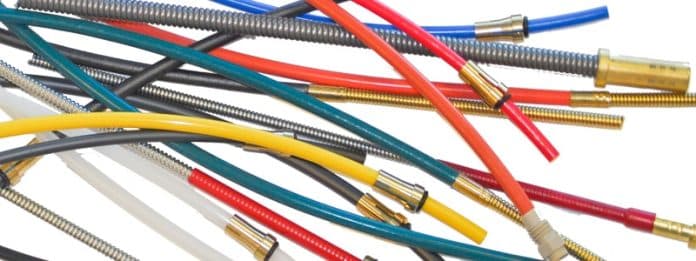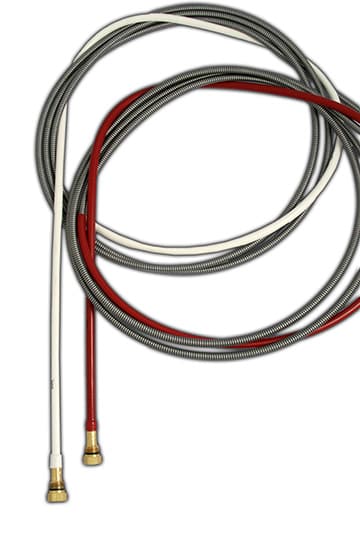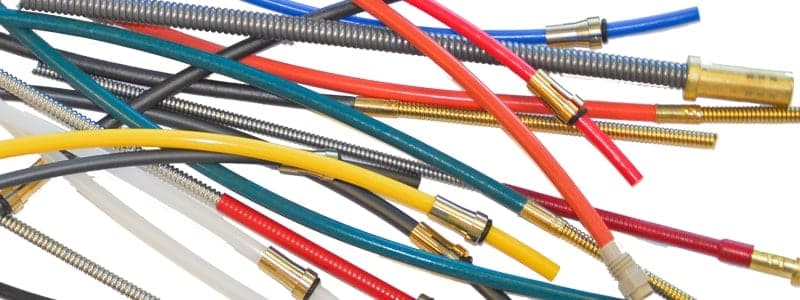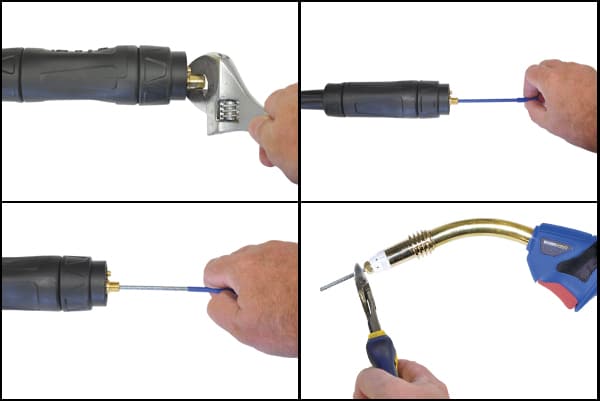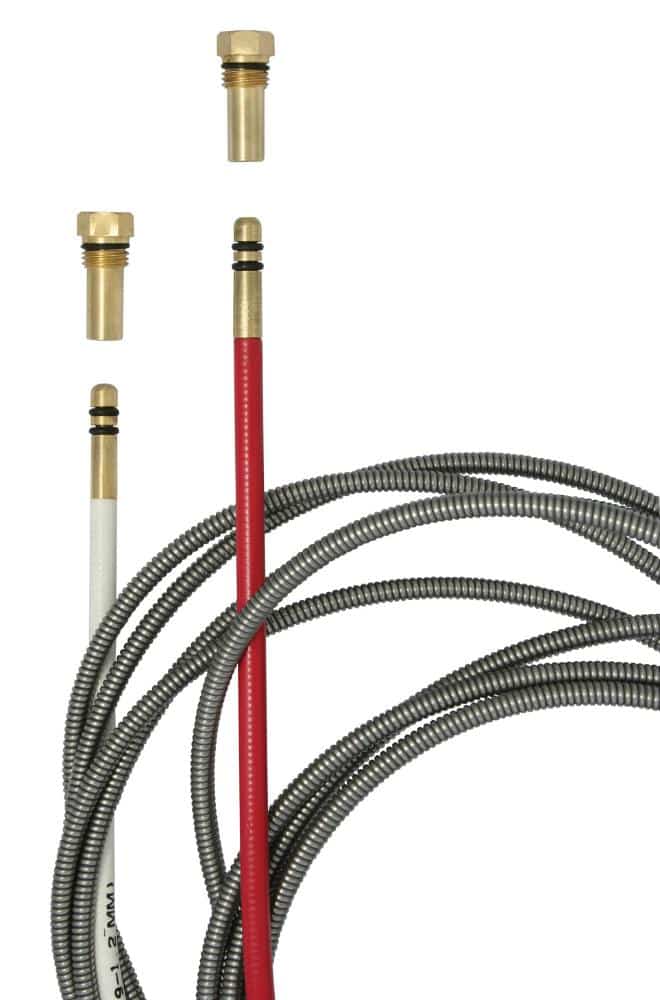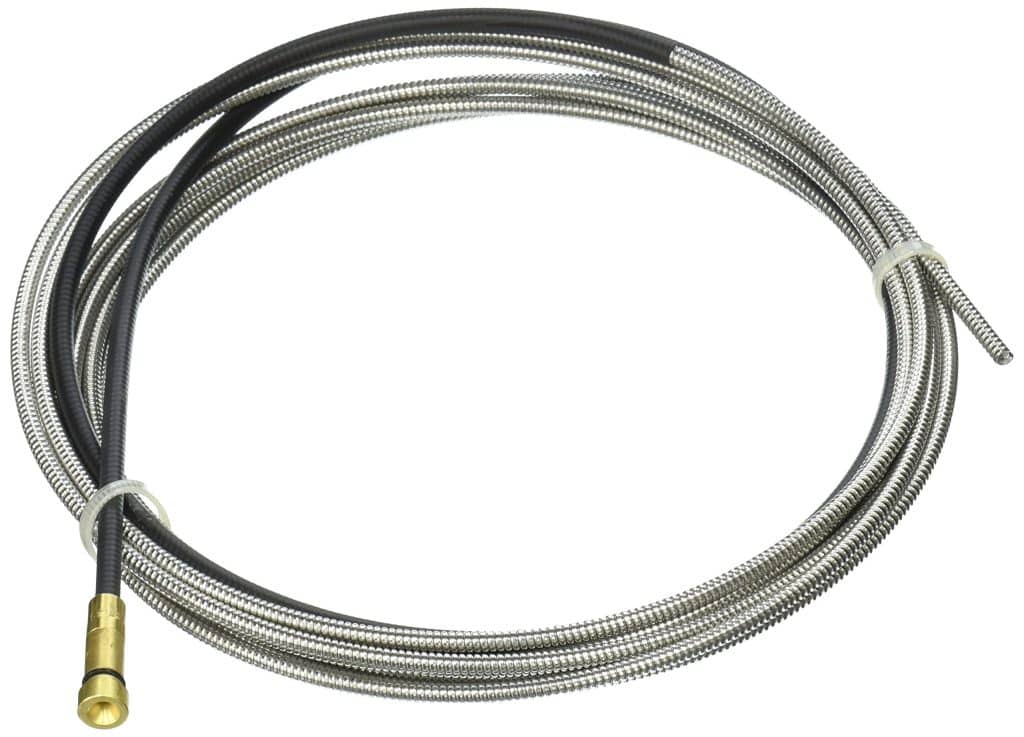Have you ever wondered about the role of a welding wire liner? Well, wonder no more, because we are here to shed some light on this fascinating component. A welding wire liner serves a crucial purpose in the realm of welding, as it guides the welding wire from the wire feeder to the gun’s contact tip, ensuring a smooth and uninterrupted flow of the wire. It may seem like a small and inconspicuous part, but it plays a vital role in maintaining the efficiency and effectiveness of the welding process. So, let’s dive in and explore the importance of this unsung hero in the world of welding!
Review contents
Overview of Welding Wire Liner
A welding wire liner is an essential component in a welding system that serves as a conduit for the welding wire. It is typically made of steel or another durable material and is designed to guide the welding wire from the wire feeder to the welding gun. The liner is housed within the welding torch cable and provides a smooth and consistent path for the wire to travel, ensuring efficient and accurate deposition of the filler metal.
Function of a Welding Wire Liner
The primary function of a welding wire liner is to guide the welding wire from the wire spool to the contact tip in the welding gun. As the wire is fed through the liner, it is protected from kinking, tangling, or other potential obstructions that could disrupt the welding process. The liner ensures smooth wire feeding, allowing for precise control of the wire feed speed and deposition rate.
This image is property of www.tregaskiss.com.
Advantages of Using a Welding Wire Liner
Using a welding wire liner offers numerous advantages in the welding process. Firstly, it provides a clear and obstruction-free path for the welding wire, reducing the risk of wire feed issues and improving the overall welding performance. This allows for consistent and accurate deposition of the filler metal, resulting in high-quality welds.
Secondly, a welding wire liner helps to minimize friction and resistance, enabling smooth wire feeding. This is particularly important for longer welding operations or when using thicker welding wires. By reducing friction, the liner prevents wire jamming or birdnesting, optimizing the wire feedability and reducing downtime.
Additionally, the use of a welding wire liner can extend the lifespan of the welding torch cable. The liner acts as a protective barrier, shielding the cable from the wear and tear caused by the repetitive motion of the wire feed. This helps to prevent cable damage and reduces the need for frequent cable replacements, saving both time and money.
Types of Welding Wire Liners
There are several types of welding wire liners available, each designed to suit different welding applications. The most common types include:
-
Solid Welding Wire Liner: This type of liner is designed for use with solid welding wires. It features a smooth inner surface that facilitates the smooth and reliable feeding of solid wires, ensuring consistent and accurate weld deposition.
-
Flux-Cored Welding Wire Liner: Flux-cored welding wire liners are specifically designed for use with flux-cored wires. They are constructed with a slightly larger inner diameter to accommodate the flux-cored wire’s unique composition. This type of liner helps to prevent the flux-cored wire from jamming or clogging during wire feeding.
-
Specialty Welding Wire Liner: Specialty welding wire liners are available for specific welding applications. These liners are designed to handle specialty wires, such as aluminum or stainless steel, which may have different feed requirements or unique characteristics.
This image is property of blog.binzel-abicor.com.
Factors to Consider When Choosing a Welding Wire Liner
When selecting a welding wire liner, several factors should be taken into consideration to ensure optimal performance and compatibility with the welding wire and welding machine. These factors include:
-
Welding Wire Diameter: The welding wire liner’s inner diameter must match the diameter of the welding wire to ensure proper wire feeding. Using a liner with an incorrect inner diameter can result in wire feed issues, subpar weld quality, and increased downtime.
-
Material Compatibility: Different welding wires are made from different materials, and it is crucial to select a liner that is compatible with the wire being used. Certain materials, such as aluminum, stainless steel, or flux-cored wires, require specific liner types to ensure optimal performance and prevent wire feeding issues.
-
Wire Feed Speed: The wire feed speed required for the welding application should also be considered when choosing a liner. Some liners are better suited for high-speed wire feeding, while others are designed to handle slower feed rates. Selecting the appropriate liner for the desired wire feed speed is essential to prevent wire feed issues and achieve accurate weld deposition.
Proper Installation and Maintenance of Welding Wire Liner
Proper installation and maintenance of a welding wire liner are crucial for ensuring its longevity and optimal performance. Here are some key steps to follow:
-
Installation: When installing a new welding wire liner, it is essential to cut it to the correct length, ensuring that it fits snugly within the welding torch cable. The liner should be inserted into the torch cable, with one end securely attached to the wire feeder and the other end connected to the contact tip in the welding gun. It is crucial to follow the manufacturer’s guidelines and recommendations during installation.
-
Cleaning: Regular cleaning of the liner is necessary to remove any dirt, debris, or welding residue that can accumulate over time. A dirty or clogged liner can lead to wire feeding issues and compromise weld quality. Use a suitable cleaning tool, such as a wire liner cleaning brush or compressed air, to clean the inner surface of the liner thoroughly.
-
Lubrication: Applying a small amount of lubricant to the welding wire before inserting it into the liner can help reduce friction and ensure smooth wire feeding. However, it is important to use a lubricant that is compatible with the welding wire and liner material to avoid any adverse effects on the welding process.
This image is property of dynaweld.com.au.
Common Issues and Troubleshooting for Welding Wire Liners
Despite their importance, welding wire liners may encounter certain issues during operation. Here are some common problems and troubleshooting steps:
-
Wire Jamming or Birdnesting: If the welding wire becomes stuck or tangled within the liner, it can cause wire feed issues. Check for any obstructions or kinks in the liner and ensure that the liner is properly installed and aligned. Cleaning the liner or replacing it, if necessary, can also help resolve this issue.
-
Erratic Wire Feeding: Inconsistent or erratic wire feeding can be caused by various factors, such as improper liner installation, incorrect liner diameter, or excessive liner wear. Check the liner for any signs of wear or damage and ensure that it is installed correctly and compatible with the welding wire. Adjusting the wire feed tension or replacing the liner may be necessary.
-
Excessive Liner Wear: Over time, the inner surface of the liner can wear down due to the repetitive motion of the welding wire. Excessive liner wear can lead to reduced wire feedability, poor weld quality, and increased risk of wire jamming. Regularly inspect the liner for signs of wear and replace it if necessary.
Safety Precautions when Using a Welding Wire Liner
Practicing safety is crucial when working with welding wire liners to prevent accidents or injuries. Here are some important safety precautions to consider:
-
Personal Protective Equipment (PPE): Always wear the appropriate PPE, including welding gloves, safety glasses, and a welding helmet, to protect yourself from sparks, UV radiation, and other potential hazards associated with welding.
-
Proper Ventilation: Ensure that the welding area is properly ventilated to prevent the buildup of toxic fumes or gases. Welding in a well-ventilated area or using local exhaust ventilation can help maintain a safe working environment.
-
Electrical Safety: Before working on or near the welding machine or torch cable, ensure that the power source is turned off and properly grounded. Avoid touching the welding wire or liner while the machine is energized to prevent electrical shock.
-
Fire Safety: Keep a fire extinguisher nearby in case of any potential fire hazards. Clear the work area of flammable materials and ensure that the welding wire and liner are in good condition to reduce the risk of sparks or heat igniting nearby combustibles.
This image is property of cdn.thefabricator.com.
Tips for Extending the Lifespan of a Welding Wire Liner
Taking steps to prolong the lifespan of a welding wire liner can help save time and money on replacements. Here are some tips to consider:
-
Regular Cleaning: As mentioned earlier, regular cleaning of the liner is essential to prevent the buildup of dirt or debris that can hinder wire feeding. Clean the liner after each welding session or as needed to maintain optimal performance.
-
Proper Wire Storage: Store welding wires in a clean and dry environment to minimize the risk of contamination or corrosion. Protect the wire from moisture, dust, or other potential contaminants that can affect the liner’s performance.
-
Adjust Wire Feed Tension: Find the appropriate wire feed tension for your welding process. Excessive tension can cause premature liner wear, while insufficient tension may result in wire feeding issues. Regularly check and adjust the wire feed tension as necessary.
-
Inspect and Replace Worn Components: Routinely inspect the liner for signs of wear, such as rough inner surface or excessive liner diameter. If any significant wear or damage is detected, replace the liner promptly to maintain optimal wire feeding.
Conclusion
In conclusion, a welding wire liner serves a vital purpose in the welding process, ensuring smooth and accurate wire feeding. Its proper installation and maintenance are crucial for optimal performance and lifespan. By understanding the advantages of using a welding wire liner, considering the various types available, and following the recommended safety precautions, welders can effectively utilize this essential component to achieve high-quality welds with efficiency and reliability. Remember to select the appropriate liner based on the welding wire diameter, material compatibility, and wire feed speed requirements. Regular cleaning, lubrication, and inspection of the liner can help extend its lifespan, reducing downtime and enhancing productivity.
This image is property of Amazon.com.

